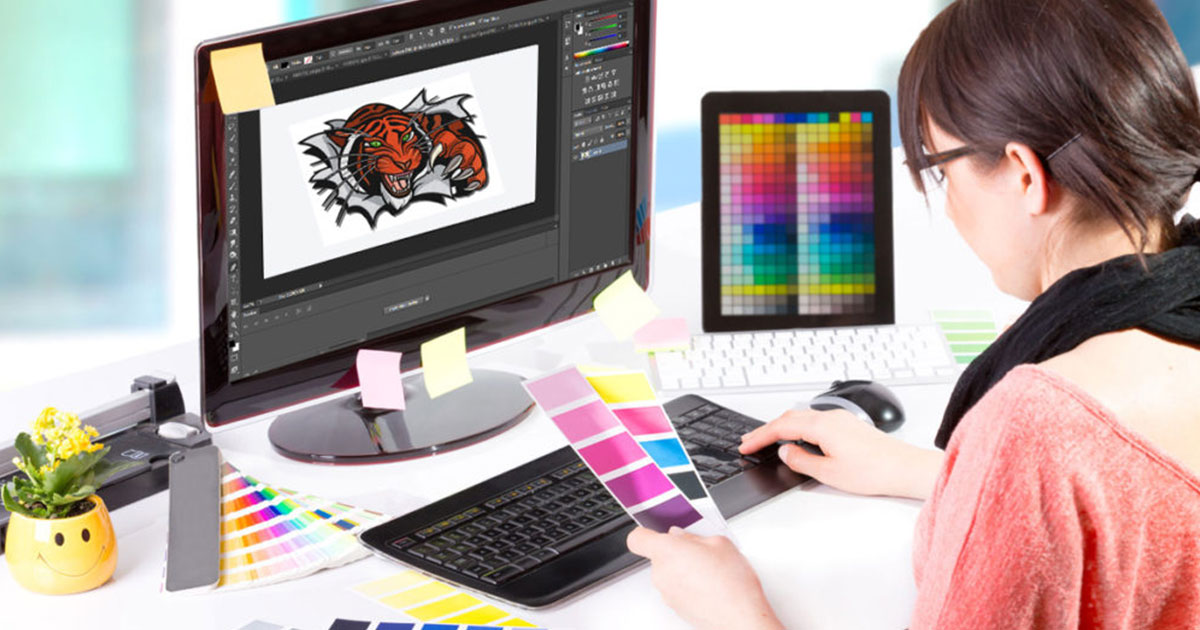Custom Digitizing for Embroidery: Customized to Your Demands
Custom Digitizing for Embroidery: Customized to Your Demands
Blog Article
Simplifying the Art of Needlework Digitizing: Step-by-Step Overview
As innovation continues to development, the digitization procedure has become a lot more available, enabling enthusiasts to bring their intricate styles to life with ease. In this overview, we will certainly untangle the intricacies of embroidery digitizing, damaging down each step systematically to simplify the procedure and equip both novices and skilled embroiderers alike.
Comprehending Embroidery Digitizing Software Application
Embroidery digitizing software program acts as a crucial device for changing elaborate styles right into digital layouts suitable with embroidery machines, facilitating specific sewing and modification. This specific software application enables customers to import various photo data styles, such as JPG or PNG, and transform them into embroidery machine-readable layouts like DST, EXP, or PES - Digitizing for Embroidery. By utilizing features like stitch editing, padding choices, and string color option, digitizing software enables customers to regulate every facet of the style process
Moreover, advanced needlework digitizing software program offers devices for creating complicated styles, changing stitch density, and integrating elaborate information. Customers can additionally preview the style prior to stitching it out, making certain accuracy and lessening errors. In addition, several software program programs offer automated features that aid streamline the digitizing procedure, saving effort and time.
Comprehending the abilities of embroidery digitizing software is crucial for attaining premium lead to needlework tasks. By grasping this tool, embroidery lovers and experts can release their creative thinking and bring intricate styles to life with precision and performance.

Choosing the Right Design Documents
After acquainting on your own with the capabilities of embroidery digitizing software application, the following important action in the process is selecting the ideal style declare your job. Digitizing for Embroidery. When picking a layout apply for embroidery digitizing, it's crucial to take into consideration the intricacy of the layout, the dimension of the end product, and the sort of material you will be working with
For elaborate layouts with fine details, a high-resolution photo or vector data is suggested to ensure that the embroidery maker can accurately recreate the layout. Additionally, the dimension of the end product plays a substantial role in choosing the appropriate design data. Bigger designs may call for greater resolution files to preserve quality and sharpness.
Moreover, the kind of fabric you will certainly be stitching on influences the choice of layout data. Various textiles may require adjustments in the style documents to make certain that the stitches are correctly aligned and the design appears as planned. By carefully selecting the best layout documents based upon these aspects, you can establish on your own up for a successful embroidery digitizing process.
Digitizing Tools and Methods
Using specialized software and precision strategies, digitizing tools are important in transforming detailed layouts into embroidery-ready files. Needlework digitizing software program, more information such as Wilcom, Hatch, or Embrilliance, gives the necessary system to convert art work right into stitch information. These programs use functions like stitch editing and enhancing, padding alternatives, and lettering tools to make certain the layout equates flawlessly onto material.
Among the crucial techniques in digitizing is developing a clear path for the needlework device to adhere to. This involves digitizing each element of the design with accuracy, establishing stitch kinds, densities, and directions. By utilizing tools like digitizing tablets or software-specific plugins, embroiderers can achieve a high degree of precision in their digitized designs.
Moreover, grasping the art of rug stitching is vital for producing high quality needlework. Underlay sewing stabilizes the material and creates a foundation for the design, ensuring that the final item is both aesthetically attractive and durable. By understanding these digitizing devices and techniques, embroiderers can boost their craft and bring intricate styles to life with accuracy and effectiveness.
Tailoring Stitch Types and Instructions
Having actually developed a foundation in digitizing tools and strategies, a vital aspect beforehand embroidery craftsmanship hinges on customizing stitch kinds and instructions with accuracy and function. The choice of stitch types can dramatically affect the total look and texture of the embroidered design. Satin stitches, known for their smooth and glossy finish, work well for creating boundaries and message. On the other hand, fill stitches are excellent for covering bigger locations successfully. By purposefully combining these blog here stitch types, embroiderers can attain deepness and measurement in their styles.
Furthermore, the direction of stitches plays a critical role in improving the aesthetic charm of the last embroidery. By experimenting with different stitch angles and patterns, embroiderers can bring their designs to life with impressive detail and ins and out.
Screening and Refining Your Digitized Layout
To guarantee the accuracy and top quality of your digitized style, thorough screening and improvement are vital action in the needlework digitizing procedure. As soon as you have finished the digitization of your layout, it is important to examine it before waging the real embroidery. Evaluating enables you to determine any type of possible issues such as thread breaks, stitch thickness issues, or style distortions that might influence the last result.

After screening, it is crucial to improve your digitized layout based upon the responses from the test sew-out. This may entail tweaking stitch settings, adjusting thickness, or making adjustments to the total layout to achieve the wanted end result. By repeating with screening and refinement, you can tweak your digitized style to excellence before moving forward with the real needlework process.
Conclusion
In final thought, grasping the art of needlework digitizing needs a detailed understanding of the software program, selecting the appropriate style data, making use of digitizing tools and techniques, customizing stitch types and instructions, and screening and improving the digitized style. By adhering to these actions, embroiderers can streamline the digitizing procedure and create top notch embroidered styles with accuracy and effectiveness.
Report this page